Key takeaways
- Understanding Spotify analytics transforms data into a meaningful connection with the audience, highlighting listener habits and preferences.
- Setting clear goals and personalizing profiles enhances the effectiveness of tracking metrics and engagement with fans.
- Interpreting data reveals deeper insights, such as emotional connections and emerging trends, guiding strategic decisions for music releases and promotions.
- Embracing unexpected data shifts can lead to new creative directions and improved audience targeting.
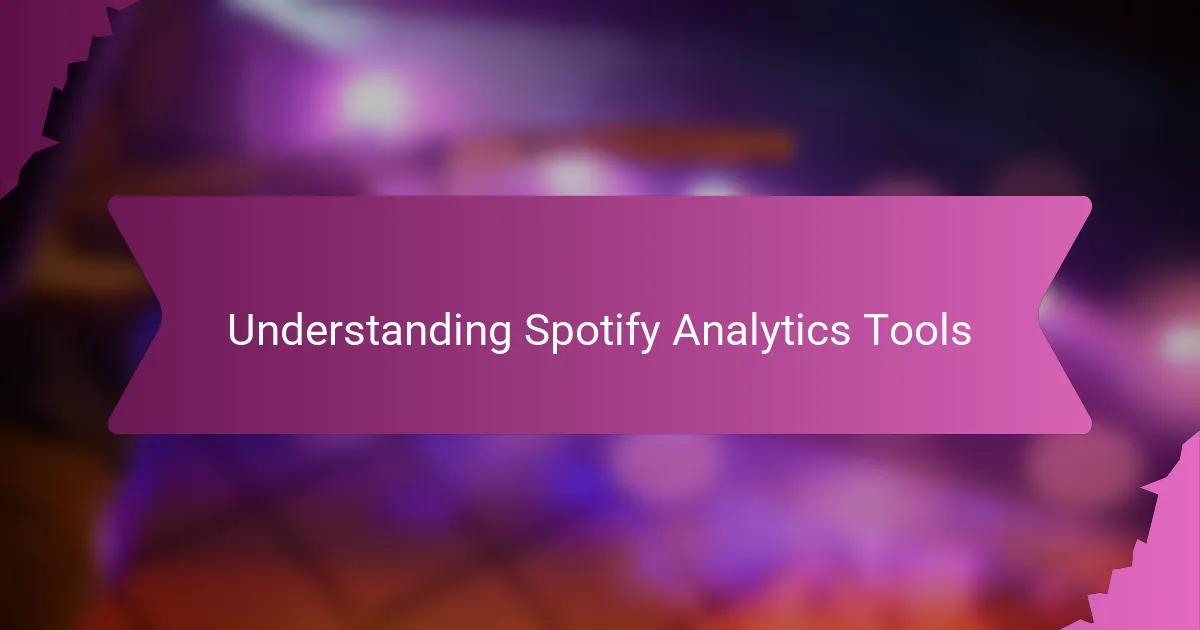
Understanding Spotify Analytics Tools
When I first opened Spotify’s analytics tools, I was honestly overwhelmed by the sheer amount of data. But quickly, I realized that understanding metrics like listener demographics and stream sources wasn’t just about numbers—it felt like unlocking a secret diary of my audience’s habits. Have you ever wondered who’s really hearing your music or where they’re tuning in from? That’s exactly what these tools reveal.
Digging into the data, I found patterns I never expected. For example, seeing which songs sparked the most repeated plays gave me clues about what truly resonates with listeners. It made me appreciate the importance of not just creating music but also learning from how people engage with it.
What surprised me the most was how real-time updates on listener activity allowed me to feel connected to my audience even miles away. It turned data into a conversation, making the process of tracking growth and engagement feel personal rather than mechanical. Understanding these tools has reshaped how I approach my music project strategy entirely.
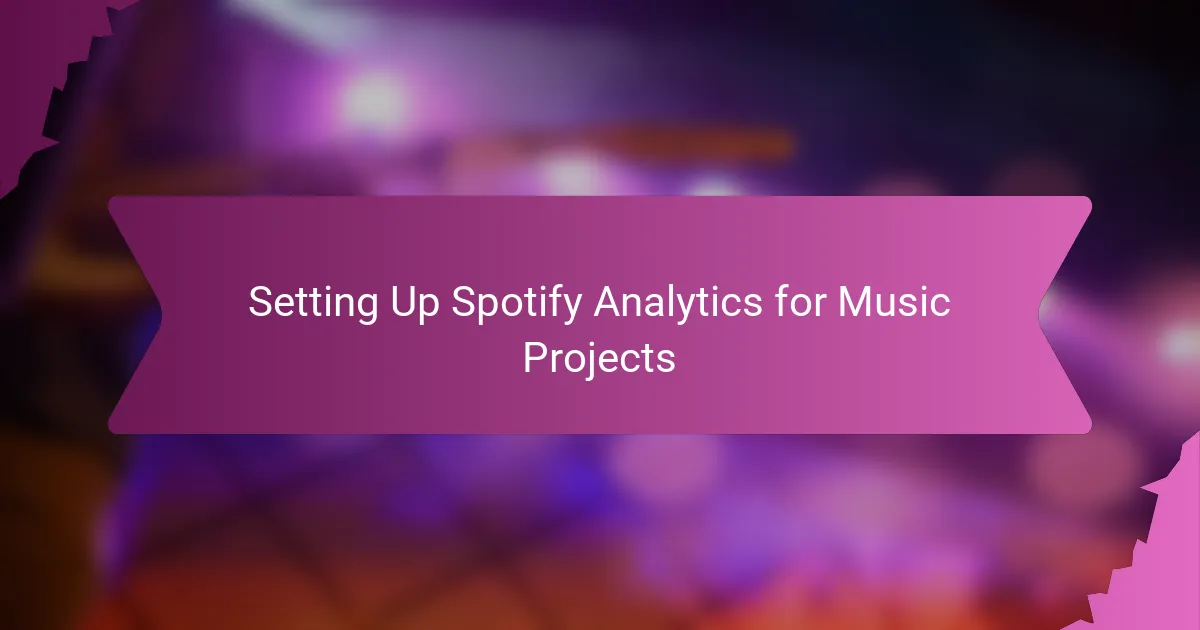
Setting Up Spotify Analytics for Music Projects
Setting up Spotify analytics for my music project felt like piecing together a puzzle at first. I had to connect my Spotify for Artists account and make sure all my tracks were properly uploaded and linked. Have you ever hesitated wondering if you missed a step? That initial setup mattered because it laid the foundation for everything I could learn later.
One key step I found really helpful was customizing my profile—adding photos and bio information. It’s not just about aesthetics; it humanizes the data and made me feel like my listeners were seeing a real artist behind the streams, not just numbers. This small effort made monitoring analytics feel more meaningful to me.
I also discovered the importance of setting clear goals at the start. Do I want more monthly listeners, or am I focusing on deepening engagement with my current fanbase? Deciding this upfront guided how I navigated through the dashboards and which metrics I prioritized. Have you tried setting a direction before diving into analytics? It changed how productive and insightful the whole process became for me.
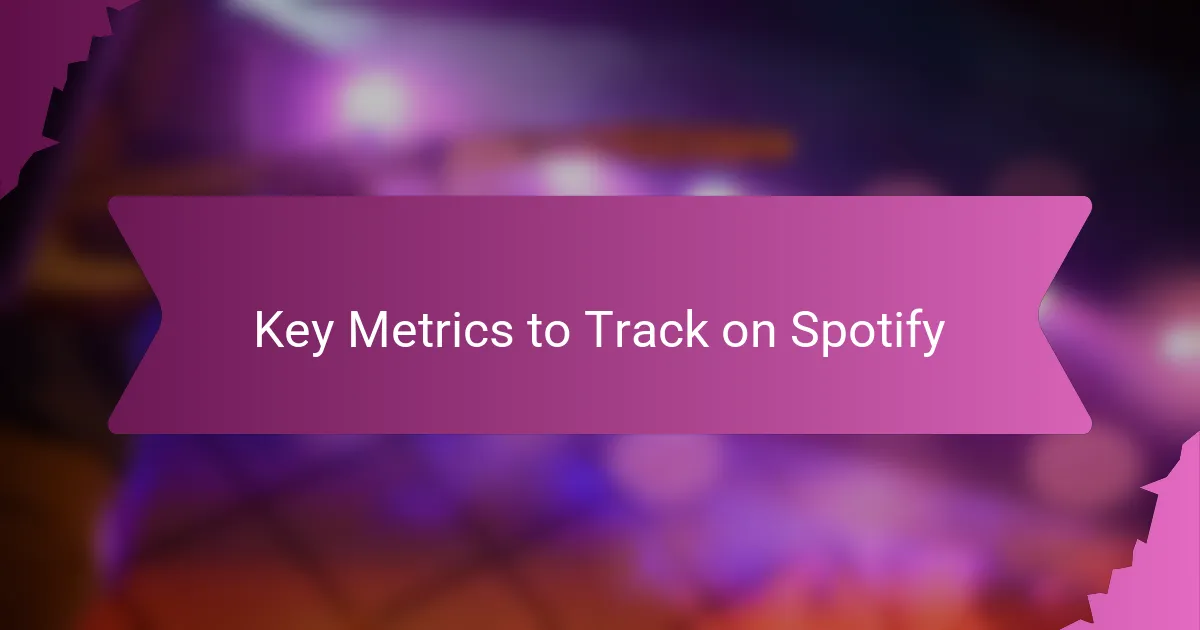
Key Metrics to Track on Spotify
One of the first key metrics I zeroed in on was monthly listeners. It felt like tracking the heartbeat of my music project—if that number was rising, I knew my reach was growing. But I soon realized it’s not just about quantity; understanding who these listeners are made all the difference.
Another metric that caught my attention was streams per track. Watching how certain songs outperformed others helped me figure out what truly clicked with my audience. Have you ever been surprised to see a lesser-known track suddenly gaining traction? That shift taught me to pay attention to the unexpected.
Engagement stats, like saves and playlist adds, really brought the data to life for me. Each save felt like a personal endorsement, a sign that someone wanted to keep my music close. It made me feel more connected to my listeners and motivated me in ways pure numbers never could.
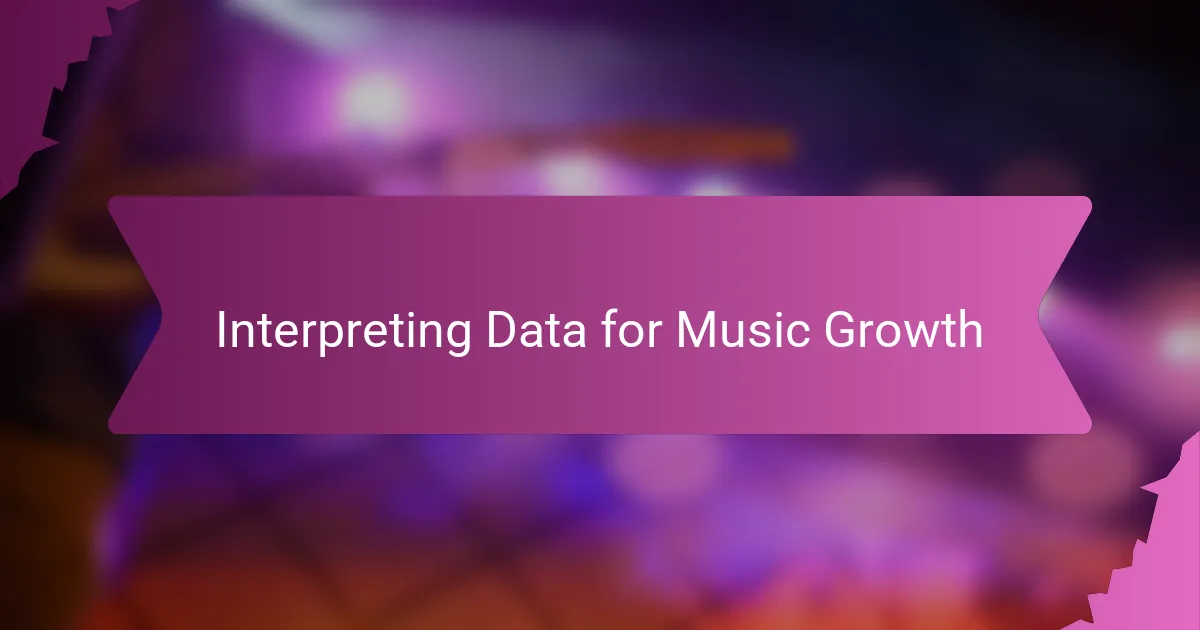
Interpreting Data for Music Growth
Interpreting the data from Spotify analytics felt at first like trying to read a new language. But once I started connecting the dots between metrics—like how geographic trends tied to specific playlists—I began to see clear paths for growth. Have you noticed how a small spike in streams from a particular city can hint at untapped opportunities? That realization made me think differently about where and how to promote my music.
What really struck me was how the depth of engagement mattered more than just raw numbers. For instance, seeing fans adding my songs to their personal playlists told me they weren’t just casual listeners—they wanted my music to be part of their daily lives. I learned that interpreting data isn’t just about surface stats but about understanding my listeners’ emotional connections.
Sometimes, the most valuable insights came from asking myself questions like, “Why did this track catch on here?” or “What happened when streams dipped last month?” Reflecting on these moments helped me adjust my release schedule and marketing efforts. Interpreting analytics became less about data crunching and more about storytelling—my story and my audience’s journey with my music.
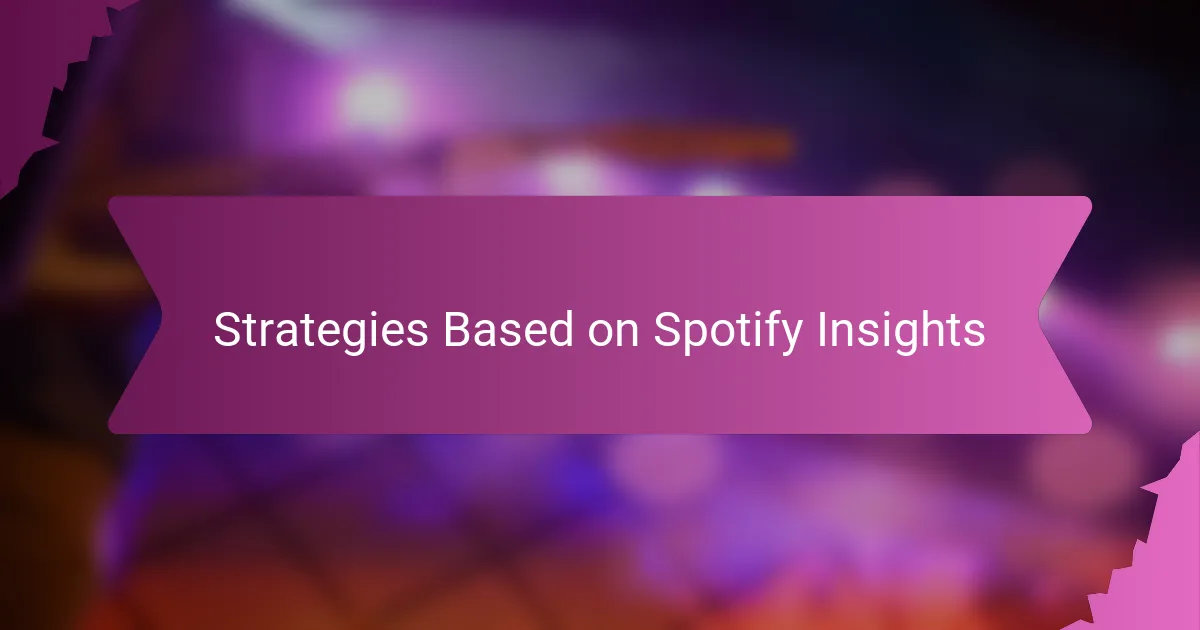
Strategies Based on Spotify Insights
Looking at Spotify insights, I realized I could tailor my release strategy to when my audience is most active. For example, I noticed a surge in streams from European listeners on weekends, so I started scheduling releases and promotions around that timing. Have you ever adjusted your plans just because you saw a pattern like that? It changed how I think about timing entirely.
Another strategy I developed was focusing on playlist placements that matched my top-performing tracks’ genres. Instead of casting a wide net, I targeted playlists where my audience naturally lived. That shift boosted my engagement significantly, and honestly, it felt like speaking directly to the right crowd rather than shouting in a noisy room.
Finally, I used demographic data to craft more personalized content. Knowing that a big chunk of my listeners were young adults helped me experiment with social media campaigns and storytelling that resonated with their experiences. It made me see how data isn’t just numbers—it’s a way to connect on a deeper level with real people.
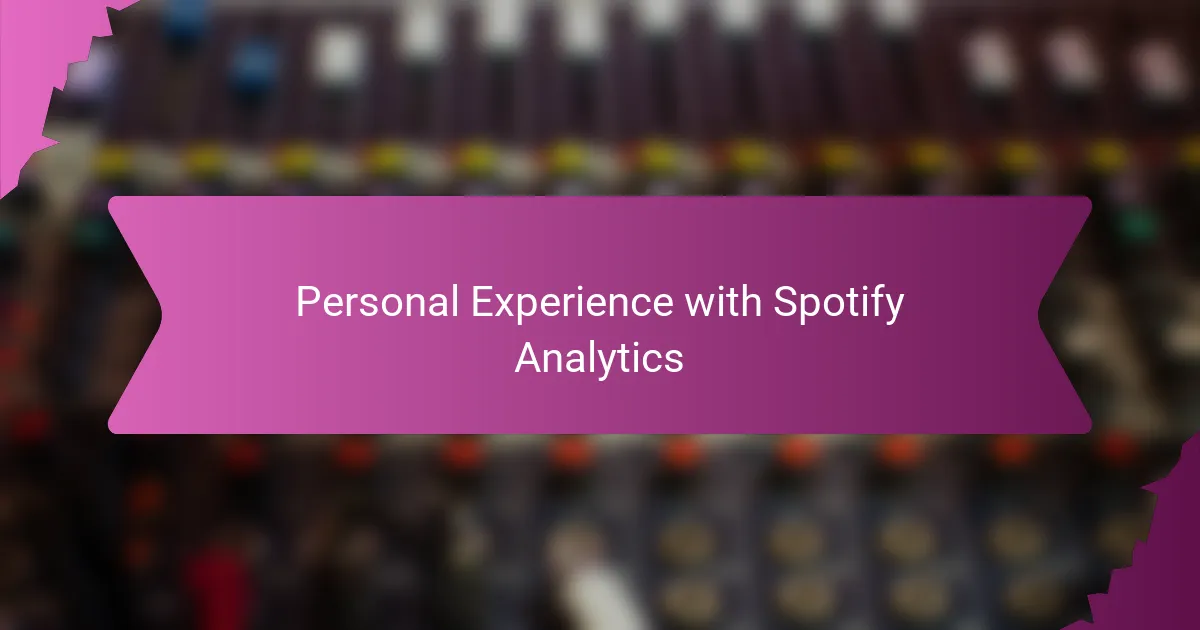
Personal Experience with Spotify Analytics
Using Spotify analytics felt like holding a mirror up to my music’s journey. I remember one evening, scrolling through the dashboard, and suddenly realizing that a spike in streams wasn’t a fluke—it was a sign my recent post had truly connected. Have you ever experienced that moment when data suddenly feels alive and meaningful? That’s when I knew these tools were more than just numbers.
There were times when the data made me pause and reflect, especially when a favorite track didn’t perform as I expected. It was frustrating, yet it pushed me to dive deeper into listener habits and ask myself tough questions about what my audience really wanted. Those insights didn’t just inform my decisions; they shaped my creative process in ways I hadn’t imagined.
One of the most rewarding parts was feeling less alone in my music project. Seeing real-time updates and discovering where my listeners were gave me a sense of connection, even when I was miles away from them. It turned the analytics from a cold spreadsheet into a vibrant conversation, reminding me that behind every stream is a person who matters.
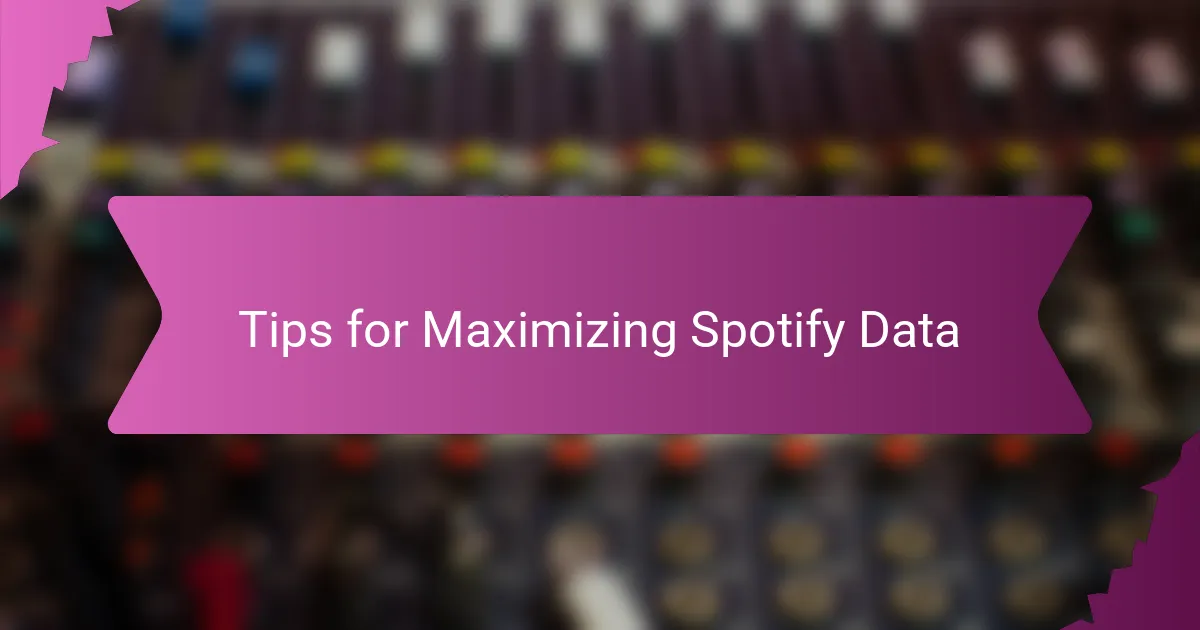
Tips for Maximizing Spotify Data
One tip I found invaluable was to regularly set specific questions before diving into the data—for instance, “Which track gained the most new listeners last month?” This focused approach helped me avoid feeling overwhelmed and made each data point feel like part of a meaningful story. Have you noticed how framing your data exploration this way transforms numbers into actionable insights?
Another strategy that worked well for me was comparing data across different time frames. Watching how listener behavior changed week by week revealed trends I might’ve missed otherwise. It’s amazing how spotting these patterns early can guide your next release or promotion, rather than relying on guesswork.
Lastly, I learned to embrace the unexpected. Sometimes, the metrics didn’t align with my assumptions—like a lesser-known song suddenly climbing streams—and instead of dismissing it, I paused to ask why. Those surprises often led me to new creative directions or audience segments I hadn’t considered before. Have you ever let a surprising data point spark a fresh idea? It’s a game changer.